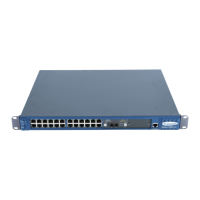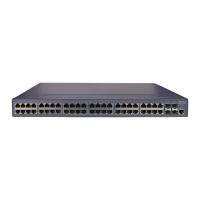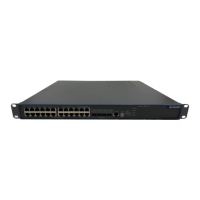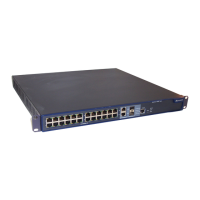Operation Manual – Routing Protocol
Quidway S3900 Series Ethernet Switches-Release 1510 Chapter 4 OSPF Configuration
Huawei Technologies Proprietary
4-13
Operation Command Description
Configure the current area to be
a stub area
stub [ no-summary ]
Optional
By default, no area is
configured as a stub
area.
Configure an area to be an
NSSA area
nssa
[ default-route-advert
ise | no-import-route |
no-summary ]*
Optional
By default, no area is
configured as an NSSA
area.
Configure the cost of the default
route transmitted by OSPF to a
stub or NSSA area
default-cost cost
Optional
This can be configured
on an ABR only. By
default, the cost of the
default route to a stub
or NSSA area is 1.
Create and configure a virtual
link
vlink-peer router-id
[ hello seconds |
retransmit seconds |
trans-delay seconds |
dead seconds | simple
password | md5 keyid
key ]*
Optional
For a virtual link to take
effect, you need to use
this command at both
ends of the virtual link
and ensure consistent
configurations of the
hello, dead, and other
parameters at both
ends.
Note:
z You must use the stub command on all the routers connected to a stub area to
configure the area with the stub attribute.
z You must use the nssa command on all the routers connected to an NSSA area to
configure the area with the NSSA attribute.
4.5 OSPF Network Type Configuration
OSPF divides networks into four types by link layer protocol. See section 4.1.4
"
OSPF Network Type". An NBMA network must be fully connected. That is, any two
routers in the network must be directly reachable to each other through a virtual circuit.
However, in many cases, this cannot be implemented and you need to use a
command to change the network type forcibly.
Configure the interface type as P2MP if not all the routers are directly accessible on
an NBMA network. Change the interface type to P2P if the router has only one peer on
the NBMA network.

